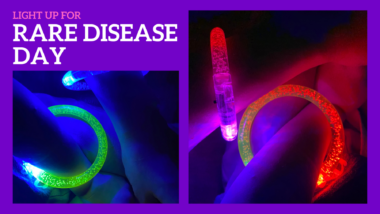How a children’s book helped me share my rare disease story
Finding connection and understanding in R.J. Palacio's 'Wonder'

Two parents, unbeknownst to them, were carriers of a rare disease. They were shocked to learn about this genetic fluke after their child was born. From that moment on, life changed for the family, but together, they were able to create a meaningful journey.
Sound familiar?
While this is a prevalent story in the aromatic l-amino acid decarboxylase (AADC) deficiency community, I’m actually describing a book written for middle schoolers. As a teacher, I’ve read it several times over the years, as it’s required reading for our fifth-grade students. But my perspective on the book changed completely after my daughter, Rylae-Ann, was diagnosed with AADC deficiency.
Now, I choke back tears when I read it. The sentences may seem simple at face value, but I repeat them over and over again in my head. This children’s book captivated me.
Spoiler alert
“Wonder,” written by R.J. Palacio, is an easy-to-understand story peppered with academic vocabulary words for the educational benefit of the students it was written for. The book has since become a blockbuster movie. Although the humor is catered to children, with a teenage conversational tone at times, I believe the story will resonate deeply with everyone in the rare disease community.
The main character is Auggie, a child with a severe facial difference. In the book, Auggie decides to take a bold step and transition from home schooling to a prestigious private school. The transition is difficult, as he expected, but also surprising. He makes a few genuine, close friends who help him navigate the turmoils that all middle schoolers face.
The book shares the same story from multiple perspectives, making it a helpful tool for teaching students about the English language and different points of view. And because it demonstrates the intricate dynamics of everyone connected to a child with a rare disease, it can have an emotional impact on rare disease parents.
Sharing my own story
As part of my goal this year to continue sharing my story and supporting other families, I read a selection of “Wonder” aloud to my middle schoolers during a special morning session to raise awareness for Rare Disease Day. Nearly everyone had either read the book or watched the movie, so I just used key snippets as a segue into sharing my story with my school community.

During a special morning school session, Richard shared his family’s story and explained how students could help raise awareness for Rare Disease Day 2023. (Photo by Richard E. Poulin III)
Although I have gone public with my family’s story, there are parts of my life that still require me to take the initiative to share. I’ve never hidden anything, but I also haven’t volunteered to share some things. It never felt like the time was right. However, I’ve learned that sometimes you need to create an opportunity.
If you haven’t read “Wonder,” I encourage you to get a copy as soon as possible. I plan to review memorable sections on YouTube, as I think it will be helpful to other parents. But it will also be beneficial for me to express my thoughts and feelings about the book.
Note: AADC News is strictly a news and information website about the disease. It does not provide medical advice, diagnosis, or treatment. This content is not intended to be a substitute for professional medical advice, diagnosis, or treatment. Always seek the advice of your physician or other qualified health provider with any questions you may have regarding a medical condition. Never disregard professional medical advice or delay in seeking it because of something you have read on this website. The opinions expressed in this column are not those of AADC News or its parent company, Bionews, and are intended to spark discussion about issues pertaining to aromatic l-amino acid decarboxylase deficiency.








Leave a comment
Fill in the required fields to post. Your email address will not be published.